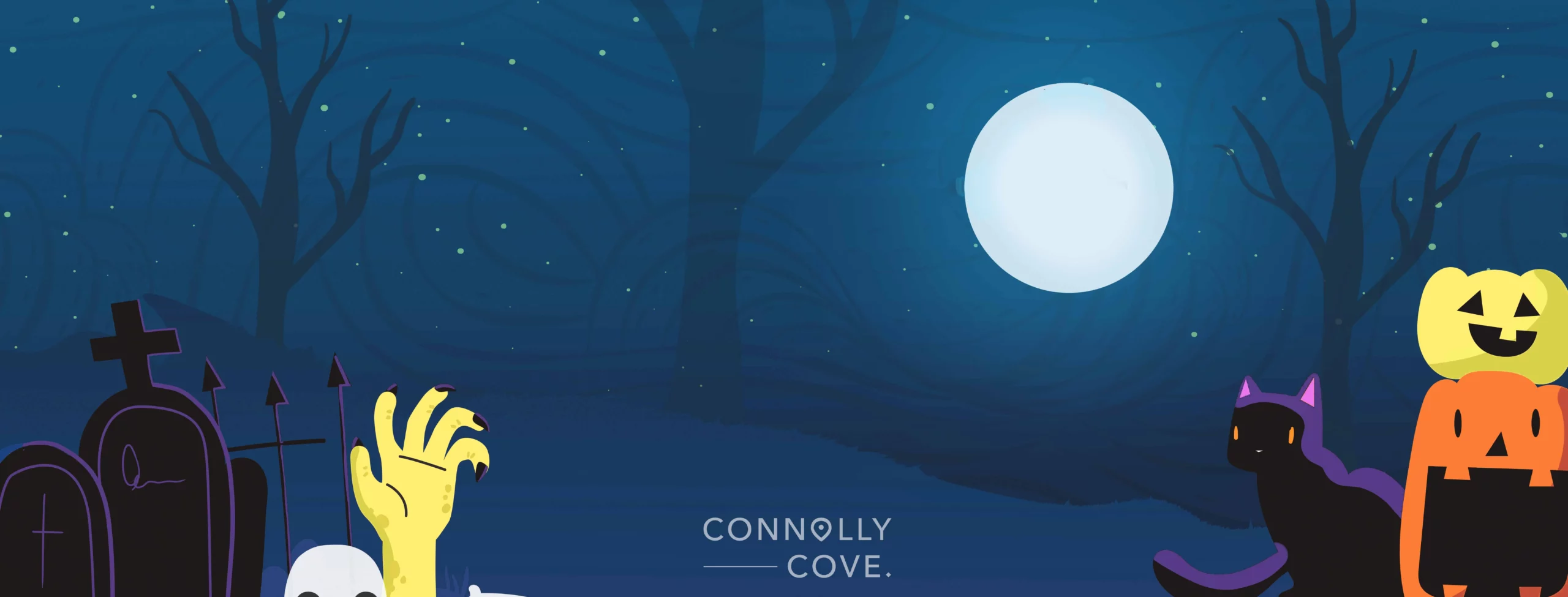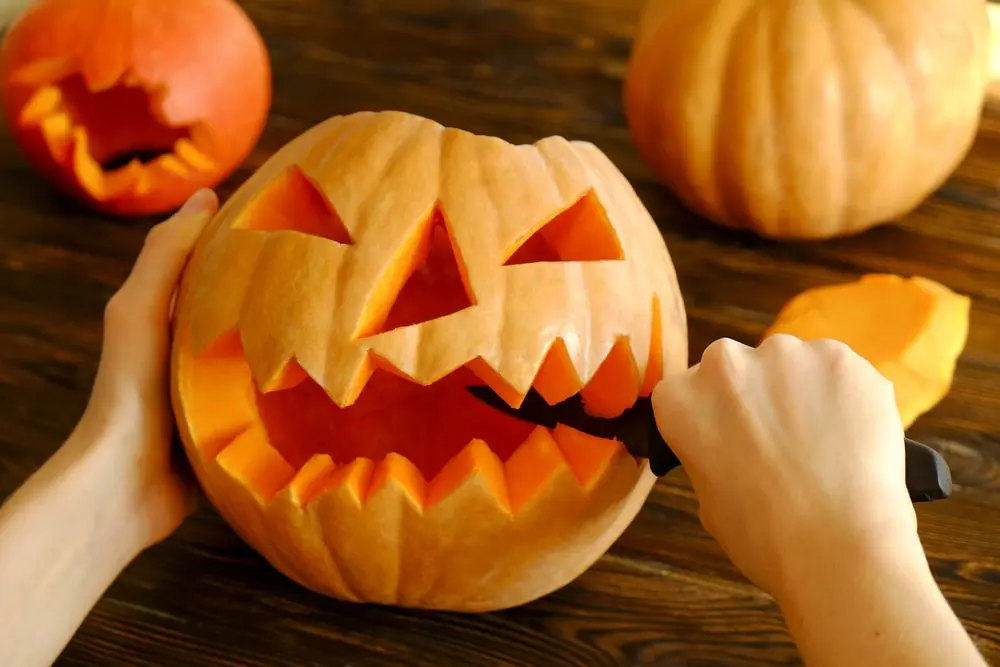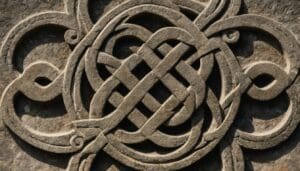Celebrate Samhain and Get in Touch with Ancestral Spirits

Updated On: April 15, 2024 by Aya Radwan
The Celtic calendar includes four main religious festivals, including Samhain, which the Celts celebrated throughout the year. These pagan festivals marked the ending of one season and the beginning of another and their effect resonated throughout the continent and extended through time. Many Christian religious festivals were built on Celtic pagan festivals that originated from the Emerald Isle.
We will take this article to talk about Samhain, which denotes the last festival of the Celtic calendar and symbolises the hibernation of winter before the calendar begins the following February again. Let’s learn what Samhain is, why and what it symbolises, the customs and traditions that celebrants observe during Samhain and how the festival evolved over the years. Moreover, we will learn about the link between Samhain and modern-day Halloween, Neopaganism, Wicca and how you can celebrate Samhain at home.
What is Samhain?
Samhain was the festival where celebrants gathered around bonfires to mark the end of the harvest season and welcome the darkest times of the year; the winter months. Among the ancient Celtic gods was the Sun, and in veneration of the Sun, the Celts used sunset to mark the end of one day and the beginning of another. This explains why Samhain celebrations start after sunset on 31st October and end by sunset on 1st November.
Samhain was a time of connection between the celebrants, the ancient gods, divine beings and lost loved ones. A long-standing belief of Samhain is the barrier between our world and the beyond is at its thinnest during Samhain. Celebrants eagerly awaited this festival to connect with loved ones, ask the gods for blessings in the new year, and unintentionally allow fairies to cross into our world.
Ancient Samhain Celebrations
The ancient Celtic religion denoted that the worshippers experienced many mischievous acts during Samhain, such as tricks and sometimes pranks. Celebrants then believed this mischief was the gods’ doing, and they must offer sacrifices so the deities would spare them from further tricks. This is why Samhain celebrations included animal sacrifices to appease the gods and make the new year free of fear and danger.
Since Samhain marked the end of the harvest season, this end needed a proper celebration. Each celebrant home lit a hearth fire until they finished gathering the harvest. After the harvest finished, the Druid priests led the people in lighting a massive community fire. Because Samhain was a veneration of the Sun, the community fire consisted of a large wheel that sparked flames and resembled the Sun. Prayers accompanied the flaming wheel, and each celebrant went home afterwards with a small flame to reignite their burnt hearth.
After the celebrants returned home and the barrier with the other world became thinner, families awaited their loved ones in another Samhain tradition called Dumb Supper. Families would leave doors and windows open as an invitation for the dead to come in. Spirits would join their families for a hearty meal as they listened intently to all the year’s affairs they’d missed while children played games and music as entertainment.
Samhain celebrations differed slightly from one region to another. Medieval historical text of north-eastern Ireland, otherwise known as Ulaid, demonstrates how Samhain celebrations lasted six days. Celebrants then held generous feasts, presented the finest brews and competed in games. A 17th-century history book by Geoffrey Keating states that celebrants had cultural gatherings every third Samhain, and local chiefs and nobles would gather to feast and confirm the power of law.
Samhain Traditions that Inspired Modern-Day Halloween
The three significant customs that sum up Halloween celebrations are pumpkin carving, dressing up in spooky costumes and the children’s all-time favourite, trick or treat. These three traditions have origins in ancient Samhain celebrations, where pumpkin carving was initially turnip carving, dressing up and going trick-or-treating was originally mumming and guising.

Mumming and guising were first recorded in Scotland before Ireland, where celebrants dressed up in costumes and went from door to door, singing carols or sometimes performing small shows in exchange for food. Celebrants liked dressing up as the spirits of the dead, and they viewed this custom as a way to protect them from such spirits in the upcoming months. While in Scotland young men painted their faces black as a representation of the Samhain fire ashes, celebrants in Ireland carried sticks as they went from one house to the other, both gathering food for the Samhain feast.
The locals carved turnips with terrifying expressions, believing these carvings represented divine spirits, while others felt the scary face would ward off evil spirits. Celebrants hung lanterns inside the carved turnips and either put them on their windowsills or carried them around town, which inspired the famous name Jack-O’Lanterns. When many Irish immigrated to the US in the 19th century, pumpkins were more common than turnips, so they replaced them in the carving ritual.
Did Samhain become a Christian Festival?
When Christianity made its way to Ireland, the Catholic Church chose to honour the customs and traditions of pagan religious festivals as a policy to lure more people in. Pope Gregory I, head of the Catholic Church between 590 AD and 604 AD, suggested repurposing pagan religious celebrations to serve Christian purposes. In this context, the Celts believed in divine spirits, while the Church believed in the miraculous powers of saints. So, the Church combined both beliefs into one celebration. And in the 800s, All Saints’ Day was born on 1 November.
Despite Pope Gregory’s ambitions, the locals still held onto their pagan traditions and celebrations. So, a new festival was born on 31 October. The night before All Saints Day became All Hallows Day Eve. On that night, Christians prepared for their celebrations of the saints on 1 November through traditions similar to Samhain traditions. As the years passed, All Hallows Day became Halloween, and the two festivals found another way to merge again.
Samhain, Neopaganism and Wicca
Neopaganism is a new religion that combines the beliefs, customs and traditions from pre-Christian Europe, Africa and the far east. In designing their rituals, neopagans used various resources, including Gaelic sources, focusing on Samhain rituals, such as bonfires accompanied by prayers.
Neopagans mainly celebrate Samhain depending on their location. In the north, they celebrate on 30 October through 1 November, while in the south, they celebrate on 30 April through 1 May. Despite the resemblance between Samhain and Neopaganism, the latter remains distinct from ancient Gaelic beliefs.
Many scholars preserve Wicca as one of the religions making up neopaganism. A Wiccan embraces Wicca and deems the connection with nature and the old spirits the core foundation of their belief. There are four yearly Sabbats in Wicca, of which Samhain represents the epicentre. During celebrations, Wiccans seize the opportunity to communicate with the souls of their dead, whether they were family members, lovers or pets.
How you can celebrate Samhain at home!
Nowadays, we often hear about Halloween celebrations, which take place almost all over the world. However, if you focus on several celebratory elements, you will celebrate Samhain in the same way ancient Celts did. If you wish to celebrate Samhain, you needn’t travel far; we bring you simple steps to follow to live the experience at home.
- Plan your celebrations over two days, as Samhain starts on 31 October and ends on 1 November. Be sure to devote time to each tradition you intend on following.
- Samhain is a community celebration. So, prepare a hearty meal and invite your neighbours, even ask them to bring a dish to share and spread the joy.
- Arrange a Dumb Supper, otherwise known as Silent Supper, where you and your companions sit silently for a meal without any distractions. You can choose any meal throughout the day, and you can arrange for the children to perform another activity under adult supervision until you finish the silent meal. The chair at the head of the table will remain empty if you wish to honour a loved one during Samhain.
- Pay tribute to the ones you lost by making a memory table and reciting some prayers or wishes for them. Make sure to extend them an invitation and leave proper plates for them if they cross over when the time is right.
- Celebrations honoured life as they did the dead. You can take a moment to appreciate and enjoy the autumnal atmosphere where you live. If nature near your home changes colour when the new season, soak in the alternating tree colours and wish for the lively ones to arrive safely after winter.
- Observe this day as your new year, which means pinpointing the thoughts and habits you wish to part with in the new year and making a list of the wishes and dreams you intend to work hard to realise in the upcoming one.
- It isn’t Samhain if there isn’t a bonfire. Choose a clear spot, away from flammable objects, hiding animals and trees to build your bonfire. Gather around the bonfire with your companions, burn the list you made earlier of the thoughts and habits to part with, share stories and make future wishes.
- A costume is a must during celebrations, although it doesn’t have it be something out of the ordinary. Whichever costume you choose, make sure you love it, and it’s also a great activity to involve children and teach them more about ancient mumming and guising.
- Use the seasonal harvest in your gathering feast, and if possible, arrange a harvest craft day. It’s worth noting that while carving turnips and pumpkins is an enjoyable activity, these plants must not go to waste. You can use them to make sumptuous soups, pickles and stews.
- Contemplate the meaning of Samhain and learn more about the festival. Apart from the celebratory elements of the day, it’s a profoundly spiritual festival that revolves around the value of life and the meaning of death. You can also search more about the origins of Samhain and learn about it developed over the years.
The continuation of Samhain traditions, despite the changing names and alterations to some of the rituals, prove the timelessness of Celtic and Irish culture. Many worldwide religions have traditions that scholars traced back to the Celtic way of life. We hope you’ve enjoyed this new light we shed on Samhain, and you might take some lessons from the traditions we’ve discussed.






